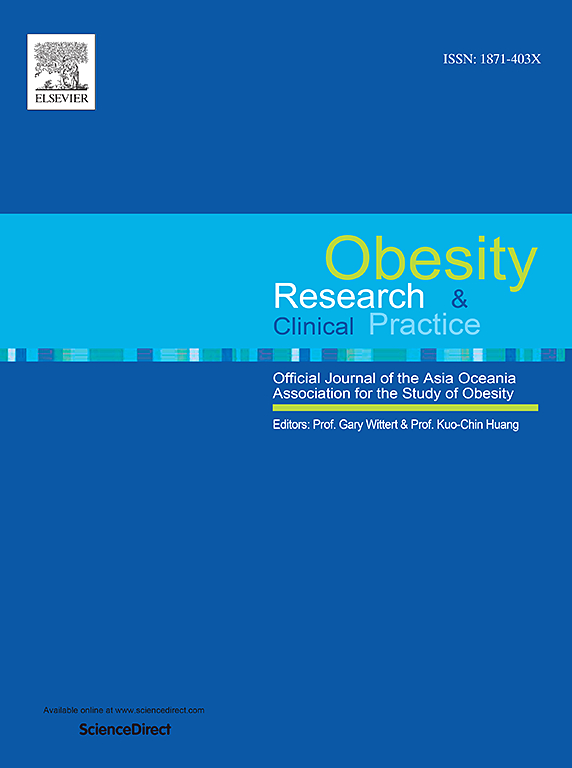美国军人身体质量指数与处方药之间的关系
IF 2.5
4区 医学
Q3 ENDOCRINOLOGY & METABOLISM
引用次数: 0
摘要
本横断面调查研究了军人身体质量指数(BMI)与处方药物(FPMs)之间的关系。从军队劳动记录中抽取现役短信进行分层随机抽样。参与者(n = 26,117)完成了人口统计学和生活方式因素问卷,其fpm数据来自军队药房数据交易服务。药物按照美国医院处方系统药物-治疗分类系统(PTCS)代码进行分类。将PTCS代码中的FPMs在三个BMI水平上进行比较:正常体重(2)、超重(25.0-29.9 kg/m2)和肥胖(≥30 kg/m2)。超重和肥胖的短信发生FPM的几率分别是正常体重短信的1.21倍(95 %可信区间[95 %CI]=1.14-1.29)和1.60倍(95 %CI=1.47-1.75)。在调整了人口统计学和生活方式因素后,与体重正常的短信相比,在20个PTCS编码中,超重的短信有14个FPMs患病率更高,而在20个PTCS编码中,肥胖的短信有15个FPMs患病率更高。在大多数PTCS编码中存在一种剂量反应,即随着BMI水平的增加,FPMs的患病率也随之增加。在这个年轻的、身体活跃的SMs群体中,随着BMI的增加,许多类型的FPMs的患病率呈剂量-反应模式增加。本文章由计算机程序翻译,如有差异,请以英文原文为准。
Associations between body mass index and filled prescription medications among US military service members
This cross-sectional investigation examined associations between body mass index (BMI) and filled prescription medications (FPMs) among military service members (SMs). A stratified random sample of active duty SMs was obtained from military workforce records. Participants (n = 26,117) completed a questionnaire on demographics and lifestyle factors and their FPMs were obtained from the military Pharmacy Data Transaction Service. Medications were classified by their American Hospital Formulary System Pharmacologic-Therapeutic Classification System (PTCS) codes. FPMs across PTCS codes were compared across three BMI levels: normal weight (<25.0 kg/m2), overweight (25.0–29.9 kg/m2), and obese (≥30 kg/m2). SMs who were overweight and obese had 1.21 (95 %confidence interval [95 %CI]=1.14–1.29) and 1.60 (95 %CI=1.47–1.75) times higher odds of a FPM than normal weight SMs, respectively. Compared to normal weight SMs, SMs who were overweight had higher prevalence of FPMs in 14 of 20 PTCS codes and SMs who were obese in 15 of 20 PTCS codes, after adjustment for demographic and lifestyle factors. In most PTCS codes there was a dose-response such that as BMI level increased so did the prevalence of FPMs. In this young, physically active group of SMs, prevalence of many types of FPMs increased as BMI increased in a dose-response pattern.
求助全文
通过发布文献求助,成功后即可免费获取论文全文。
去求助
来源期刊

Obesity research & clinical practice
医学-内分泌学与代谢
CiteScore
7.10
自引率
0.00%
发文量
80
审稿时长
49 days
期刊介绍:
The aim of Obesity Research & Clinical Practice (ORCP) is to publish high quality clinical and basic research relating to the epidemiology, mechanism, complications and treatment of obesity and the complication of obesity. Studies relating to the Asia Oceania region are particularly welcome, given the increasing burden of obesity in Asia Pacific, compounded by specific regional population-based and genetic issues, and the devastating personal and economic consequences. The journal aims to expose health care practitioners, clinical researchers, basic scientists, epidemiologists, and public health officials in the region to all areas of obesity research and practice. In addition to original research the ORCP publishes reviews, patient reports, short communications, and letters to the editor (including comments on published papers). The proceedings and abstracts of the Annual Meeting of the Asia Oceania Association for the Study of Obesity is published as a supplement each year.
 求助内容:
求助内容: 应助结果提醒方式:
应助结果提醒方式:


